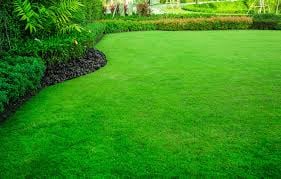If you live in Georgia or another southern state, you can count on the appearance of fire ant mounds in the year's late spring. To be such tiny little pests, ants can cause a lot of turmoil in home lawns, hayfields, and pastures. They are one of the most detested insects. Many people are stung […]

A regular fertilization program is important to maintain healthy, attractive turf. A fertilizer grade or analysis is the percentages of nitrogen (N), phosphorus (P), and potassium (K) in the fertilizer. You should choose a fertilizer for the total amount of nutrients in the container and the nitrogen source. It is usually wise to get a soil test to determine the needs of your lawn, and this will give you recommendations on the grade of fertilizer and amount needed to meet the needs of your lawn.
N-P-K Ratio for Lawns
Georgia law requires that fertilizer producers display the guaranteed grade or analysis on the fertilizer containers. The grade or analysis of fertilizer is the percentage of N (nitrogen), P (phosphorus), and K (potassium). If fertilizer is 16-4-8, for example, this means:
- 16 (the first number) represents the percentage of Nitrogen (16%)
- 4 (the second number) represents the percentage of Phosphorus (4%)
- 8 (the third number) represents the percentage of Potassium (8%)
To figure the ratio, take the smallest number in the grade and divide it into each number of the grade.
*Example: Fertilizer with a 3-1-2 ratio is 12-4-8.
To figure the ratio example above: 4 is the smallest number in a 12-4-8 grade, and it can be divided into 12 three times, and into 8 two times for a 3-1-2 ratio. 12-4-8 = 3-1-2.
Fertilizer Recommendations
Keep in mind that all lawns need nutrients/fertilizer during the growing season. Scientists recommend that you apply one pound of nitrogen to a thousand square feet of Bermuda grass monthly (or according to directions for your type of grass) during the growing season, for example. Remember the formula above to determine the actual nitrogen in your fertilizer. Also, remember that there is only a percentage of the materials in your fertilizer that are actual nutrients (hence the percentages). The other material in your bag of fertilizer is called filler or carrier.
Recommendations for fertilizer are based on the type of grass. There is not much difference in brands of fertilizer if you follow the directions on the label as directed. It’s more important to put the right nutrients on your lawn – no need to worry about name brands.
Choosing Fertilizer with Needed Nutrients
The big picture of lawns is that they all need nutrients during their growing season. It is important to know what the nutrients in your fertilizer do for your lawn. If you choose a fertilizer that is 29-3-4: 29% of it is Nitrogen, 3% of it is Phosphorous, and 4% of it is Potassium.
- Nitrogen helps build thick green lawns
- Phosphorous helps promote strong vigorous root systems
- Potassium helps to increase resistance to disease and drought
Since scientists recommend one pound of nitrogen be applied to 1,000 square feet of lawn, for example, you will have to apply less fertilizer with the fertilizer above (29-3-4) than one with a lesser percentage of nitrogen (example: 10-10-10).
Nitrogen Source
Nitrogen materials can be divided into two groups: quickly available and/or slowly available.
| Quickly Available Also referred to as water-soluble | Immediately available to plants – provided there is adequate moisture usually less expensive cause growth flushedHave short soil residualHave high burn potential |
| Slowly Available Also referred to as water insoluble or controlled release | Materials release nitrogen more gradually over long periods of time usually more expensive requires fewer applications reduce losses to teaching have low burn potential high-quality slow-release fertilizer should contain at least 30% of the nitrogen in the fertilizer in a slow-release form |
As you can see, there are advantages and disadvantages to different types of fertilizer. You will need to determine which is best for your lawn and works best for you.
Conclusion
Fertilization of the lawn is important to keep it healthy, green, and beautiful. Following guidelines for your lawn and the type of grass you have will help give you the best results. A soil sample can give you the number of nutrients needed by your lawn. If you are unable to find a fertilizer with the exact specifications in your soil sample, you can select one that is closest to it. The type of fertilizer (granular or liquid, or quickly available / slowly available) can be a personal preference or based on the needs of your lawn. You want to add a fertilizer that has all the needed nutrients (N-P-K), but nitrogen is very important for that thick, lush lawn you want. If all of this is too complicated and you need guidance or help, contact Pride In Turf. They can advise you – or take the work off your hands. This will assure you of excellent results every time.
